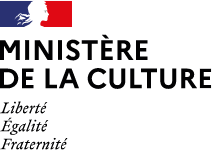The climate demands our attention, indeed makes us worry, but it would be arrogant to imagine that we are the first to entertain such concerns, which were already clearly present with our forebears.
Weather and climate are two sides of the same coin. Meteorology refers to the daily experience of events such as wind, rain, and heat, whereas the climate considers the weather over much longer durations. The French language uses the same word, le temps, to designate both the weather and the passage of time. From this perspective, deep time, historical time, is inherent in the very notion of climate.
The word ‘climate’ no longer has the meaning of “portion or zone of the surface of the earth, terminated by two circles parallel to the Equator”, as defined in the eighteenth-century Encyclopedia of D’Alembert. This understanding of climate fell into disuse with the development of modern meteorological science, and the concept of climate became dynamic, implying an interdependence of ecosystems within the same world. The notion of climate has even expanded into realms such as politics (Bruno Latour speaks of the “atmospheres of politics”) or the description of mindsets and sensibilities. It also represents a central notion in the history of art.
Brueghel’s winter landscapes bear the mark of what climatologists call the Little Ice Age. But this winter is not only a historical recording; climatic events in art must be analyzed pluralistically. Representations of romantic storms or the red skies of Turner and Munch are not mere backdrops. The artists have approached the climate, with its vagaries and its deeper changes, as a topic in its own right. But while George Braque claimed that art is made to disturb while science reassures, we seem to have entered an age in which both science and art are both disturbing. Today we live in the epoch of the Anthropocene, about which the contemporary arts seek to raise awareness and even to propose solutions.
So that artists are not alone in recording, denouncing, and struggling against climate transformations, Art History must also stake its place in the environmental humanities and embrace the paradigm shifts and the new eco-criticism. Art History has long been concerned with the climate, understood in its now obsolete sense of “portion of the earth”, as a driver of artistic creation. Vasari, Montesquieu, Kant, and Winckelmann used the notion of climate to explain differences in places and behavior and made it the founding element of a style and an artistic school. These developments replaced the spirit of the individual with the spirit of a people and led to a hierarchical understanding of arts and civilizations, which has since been largely refuted. Nevertheless, they provide the basis for historiographical reflections that can help understand how the climate was a foundation of problematic but historically situated theories, from which as well as in opposition to which Art History as a discipline was built.
Disciplines related to Art History must also be called upon to embrace as broadly as possible the consequences of confronting the theme of climate. Architecture has always been about creating alternative climates, whether to make an environment cooler, or brighter, or more protected from the sun. Archaeology, through the physical demands of the practice as well as the material sensitivity of excavated objects, is dependent on the climate and directly exposed to its fluctuations. Museums, as places of conservation and protection of objects confronted with effects of the climate and its changes, must also be reexamined in this light.
Posing questions regarding the climate and the history of art causes our discipline to confront an eco-criticism, an eco-politics, even an eco-poetics. This approach treats artistic productions as historical and cultural sources for a study of the climate over the long term. It also calls for an analysis, from this viewpoint that is recently developed but vitally important for our contemporary societies, on the impact of the climate on all human production.




